Paul Murrell tests the 2019 Jaguar F-Pace 25d R Sport with pricing, specs, ride and handling, safety, verdict and everything the over-50 driver needs to know.
Summary: The demand for large SUVs continues unabated. The Jaguar F-Pace now gets a two-litre turbo-diesel option and that makes it a real alternative in this increasingly crowded category.
2019 Jaguar F-Pace 25d R-Sport
Pricing: From $91,295 (plus ORC) (serious money, especially when you add a few essential options)
Warranty: Three-years, unlimited km
Safety: 5-star ANCAP (2017)
Engine: 2.0-litre four-cylinder turbo-diesel
Power: 177kW at 4000rpm
Torque: 500Nm at 1500rpm (lots of torque on tap at low revs)
Transmission: Eight-speed automatic
Drive: all-wheel drive
Body: 4746mm (long); 2070mm (wide); 1874mm (high)
Cargo area: 650 litres (1740 litres with seats lowered)
Weight: 1768kg
Towing capacity: 2400kg (braked), 750kg (unbraked)
Tyres: 255/55R19
Spare wheel: space saver (we keep on saying, if you go off-road, this isn’t acceptable)
Turning circle: 11.6m
Fuel tank: 63 litres
Thirst: 6.8/100km (combined, diesel)
seniordriver consumption: 6.6L/100km over 380km
[review]
ONCE UPON A TIME (and many of the readers of seniordriveraus will remember it well), it was a brave buyer who decided to choose a Jaguar. Oh, sure, the design was always alluring, the value undeniable but the reliability … well, that left something to be desired.
How things have changed.
When we spoke to Jaguar’s talented and modest chief designer Ian Callum some time ago, he was thrilled that he finally had the financial backing to deliver on the promise that Jaguar had always had (and, in its early days, often fulfilled). We’re talking, of course, about the giant Indian conglomerate, Tata, who bought the company from Ford in 2008 for a lazy $US2.3 billion (Ford had bought the ailing brand in 1990 for $US2.5 billion, and then tipped in a further $US10 billion in a vain attempt to revive the brand).
It’s amazing what a difference a fully-fledged budget can make. Jaguar now has a distinctive and desirable product range, and regularly scores near the top of the J D Power Customer satisfaction survey.
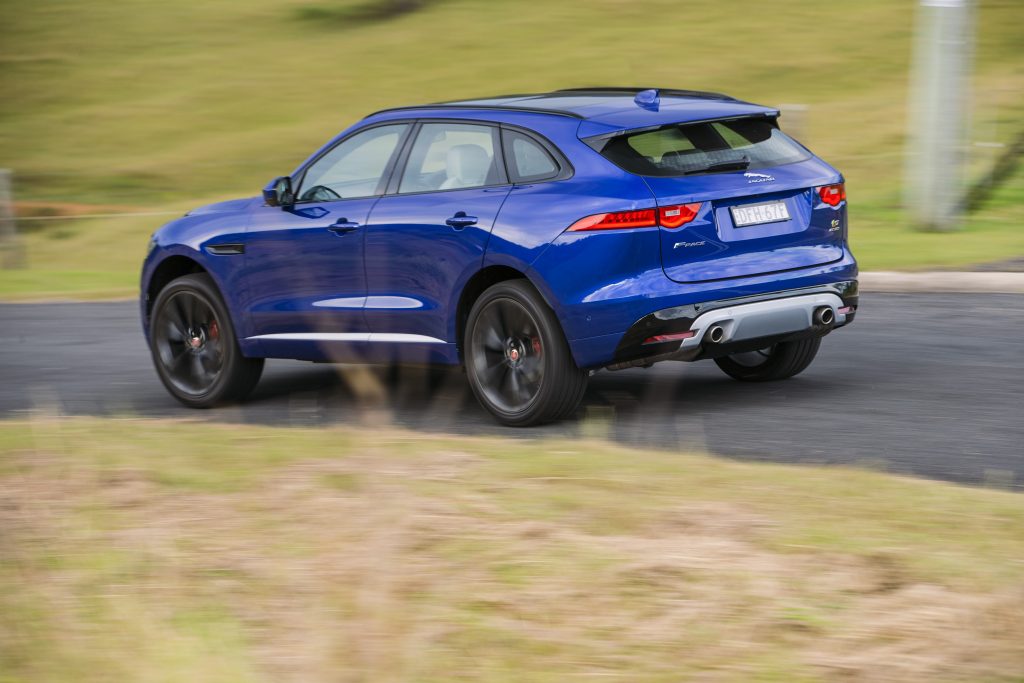
SUVs to meet every quirky taste.
It’s fair to say that SUVs are very much the flavour of the month. Naturally, there are the no-nonsense models that deliver all the traditional attributes, but there are even more odd-ball variations on the SUV theme that appeal to niches in the market – things like the BMW SUV coupes, the diminutive Mazda CX-3, Land Rover’s Evoque in its many guises and even the MINI Countryman.
Jaguar’s F-Pace is perhaps more mainstream than many of these, but it does appeal to buyers who are looking for something with a bit of style and a sporty bias.
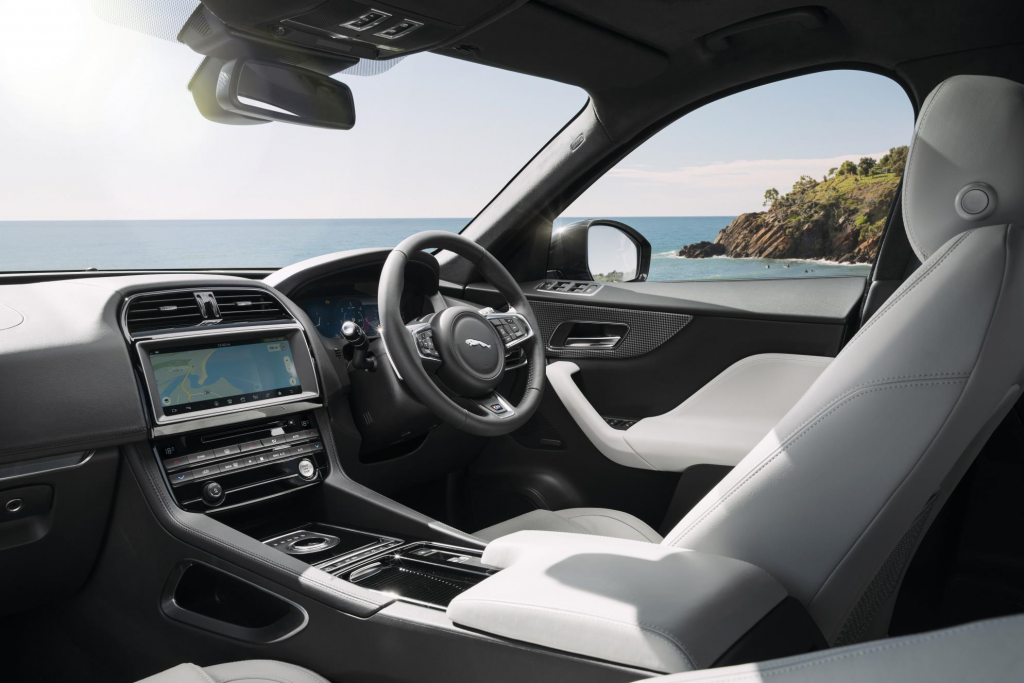
Two litres is not a milk carton.
It used to be a jokey bumper sticker usually on large and loud V8s that only milk comes in two-litres. Sorry fellas, but times have changed.
The F-Pace we are testing is the R Sport 25d, the new four-cylinder twin-turbo diesel model.
The diesel unit produces 177kW and 500Nm, certainly not numbers to be sniffed at, and the F-Pace, while not a tyre-shredder is no sluggard. Importantly, it straddles the line between performance and fuel economy. Torque arrives from just above idle speed (and peaks at 1500 rpm).
Jaguar’s claim of 5.8L/100km may be a little optimistic (like almost all such claims) but over 380km of varied driving conditions (but no off-road), seniordriveraus achieved a commendably close 6.6L/100km. That’s very economical for what is, after all, a vehicle that weighs in at 1768kg.
While the diesel isn’t quite as relaxed and quiet as Jaguar’s petrol engines, it is only very occasionally that it makes its oil-burning credentials known.
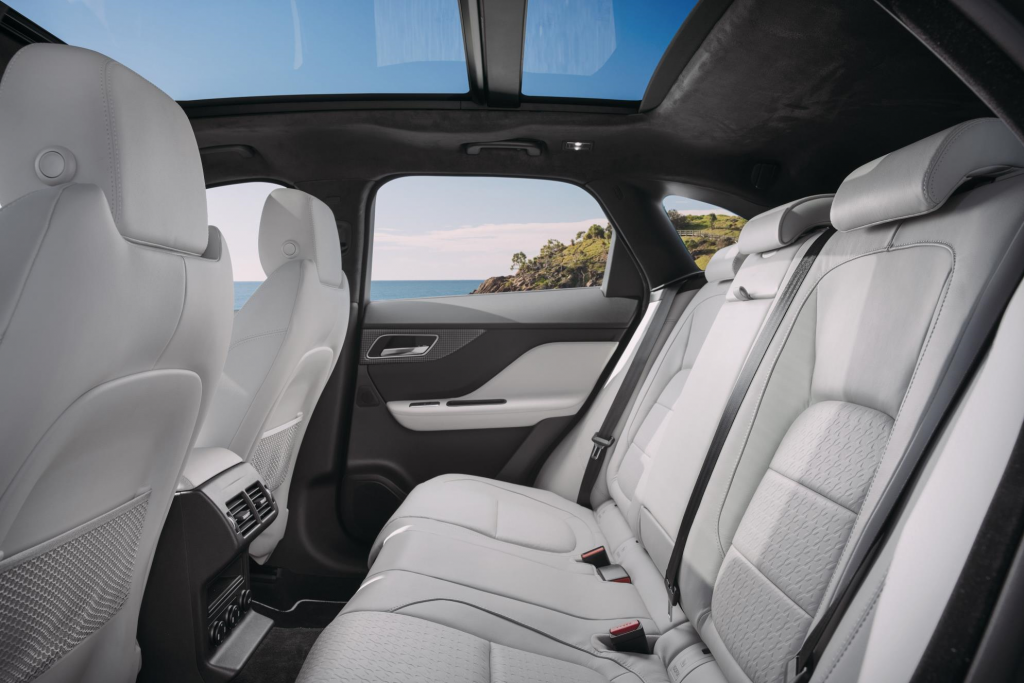
Throw in a little performance.
Sitting behind the leaping cat symbol, it’s impossible not to be tempted into some spirited driving. The F-Pace doesn’t let the Jaguar name down. It crests along on its torque, but once revs exceed 3500, there’s not much point holding on for longer, even though the peak power figure of 177kW apparently arrives at 4000rpm.
Reassuringly, the handling, steering and cornering are well up to the task, delivering almost car-like levels despite the weight and higher centre of gravity.
The ride is good, but it doesn’t set new standards, as did many Jaguar saloons in the past. Notwithstanding the 19-inch alloy wheels, road noise is well supressed.
The all-wheel drive system splits torque between the front and rear axles as required and, for those who like such things, there’s a display you can bring up that shows you, in real time, where the torque is being sent at any given moment. Brake-based left/right torque vectoring is a bit of technical wizardry that gives the F-Pace the ability to tackle even challenging country roads with total confidence.
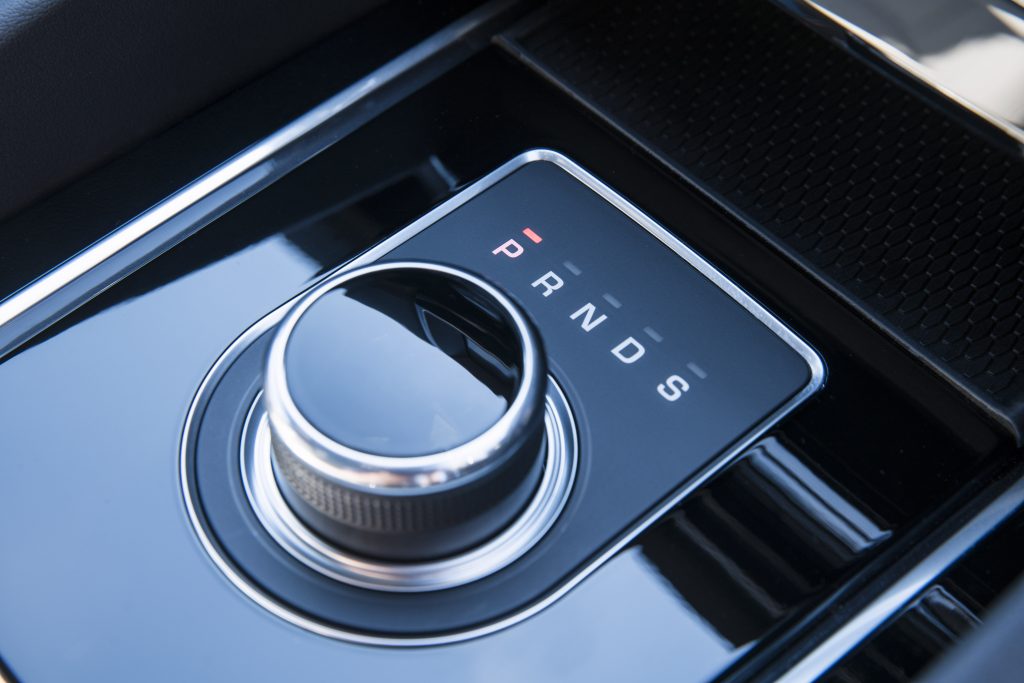
Style setter.
As you’d expect from the name, the R Sport gets a body kit that does a good job of enhancing the already appealing looks and proportions.
Inside, however, it isn’t quite up to the high standards sets by some of the non-SUV Jaguar models. That’s not to say it’s dowdy, but it doesn’t quite deliver the theatre you expect of a Jaguar.
The good news, though, is that most of the materials feel suitably premium. The distinctive rotary dial to change gears becomes more familiar with use, but still manages to come across as a gimmick rather than a truly useful innovation.
The digital instrument cluster takes a little while to become intuitive, but conveys plenty of information. The high-mounted buttons for the power windows never quite feel logically located, but no doubt will do after more time with them (oddly, they reminded us of ashtrays – remember them? – that were often mounted in a similar position back in the dim dark ages).
The head-up display is laser-based so overcomes one of the usual complaints of such devices, in that it works quite well even when you’re wearing polarising sunglasses. Unfortunately, it’s a $2650 option.
And that brings us to … options.
While it seems that most car companies are including more and more kit in the standard price, luxury car companies appear to be going the other way. Luxury car options lists are longer and more comprehensive than a divorce lawyer’s bill.
Among the more than 80 options on offer are sliding panoramic sunroof for $4420, surround camera system for $2160, adaptive cruise control for $3370, blind spot monitoring for $1150, various larger wheel options, upgraded sound system options and a whole lot more. Really, at this price, it would be reasonable for many of the optional items to be included, especially such things as adaptive cruise control, for example, that’s standard in even the Suzuki Jimny. The options get downright silly with an air quality sensor for $210, on-floor cargo net for $310 and an “activity key” for $660 (it’s a wearable, waterproof wristband that makes it possible for owners to lock the normal key inside the vehicle when at the beach, or somewhere similar). On the other hand, the tailgate is powered and isn’t an optional extra, and nor are electric front seats with lumbar support, rain-sensing wipers, auto headlights, fog lights and LED tail lights. The 10.2-inch InControl Touch Pro infotainment system has now been added to the standard features list. Also included on the standard features list are hill launch assist, trailer stability assist, all-surface progress control and the afore-mentioned torque vectoring.
Unlike the Jimny, however, the F-Pace has a suitably huge luggage area of 650 litres, which increases to 1740 when you fold the rear seats away.
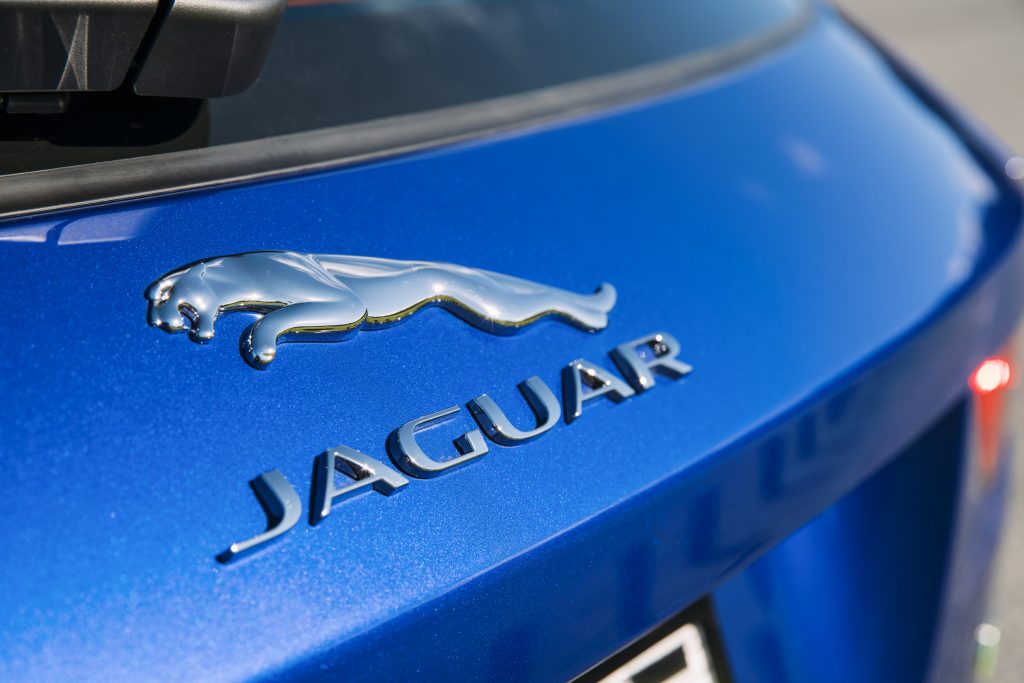
Taking care of safety.
The F-Pace rates highly on safety, with autonomous emergency braking, forward collision warning, lane departure warning, stability control and traction control on all models. Forward vehicle guidance is a useful standard feature that uses a surround camera system to give a low-down perspective when parking or manoeuvring near obstacles.
Summary.
With prices approaching the rather challenging $100k mark (by the time you factor in the usual on road costs), the F-Pace really should offer more standard features for the money, but it does offer something a little different from its obvious competitors, as well as a nice sense of being just a little more individual and that’s hard to put a price on. The 25d R Sport sits in the middle of the range and is an excellent compromise of performance, economy and value for money.
